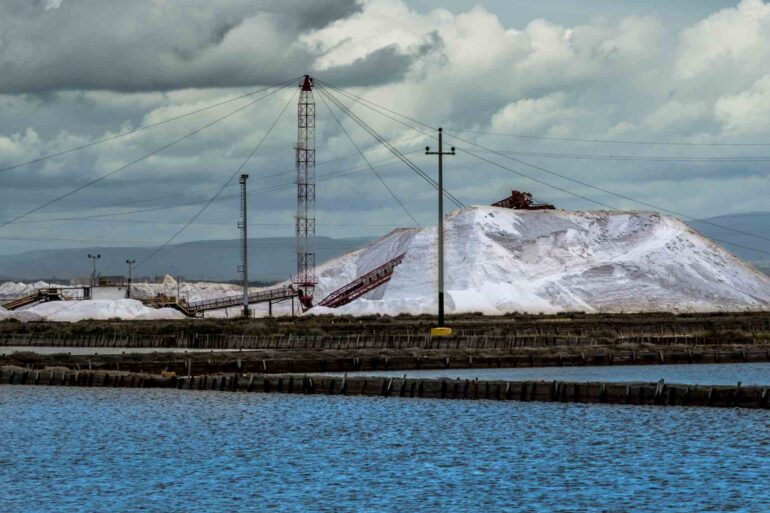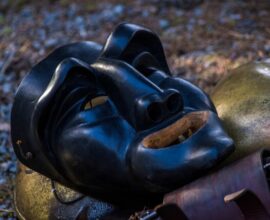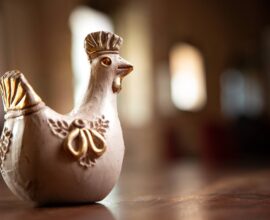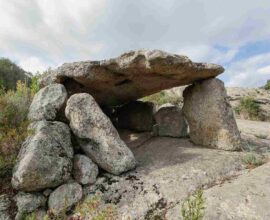Discovering Saline Conti Vecchi, a place where history and nature blend together
Saline Conti Vecchi is an extraordinary monument of industrial archaeology immersed in a particularly beautiful natural oasis here in Sardinia
Not so far away from Cagliari, Saline Conti Vecchi represent the perfect place to plan one-day trips with your family, to enjoy the hidden beauty of Sardinia and find out a still little known page of local history related to the extraction of the so-called white gold.
Less than twenty minutes from the centre of Cagliari, next to the Macchiareddu industrial area, there’s a fascinating place where history and nature blend together in a timeless fusion: we are talking about Saline Conti Vecchi, 2700 hectares of immaculate expanses nestled in the lagoon of the nature reserve of Santa Gilla, in the territory of Assemini, Capoterra and Cagliari.
These are the eldest salt pans in Sardinia, built way back in 1929, which for over ninety years have been making and telling the story of the foresight, perseverance and virtuosity of a pioneer eco-sustainable and self-sufficient project which has managed to contribute to the economic and social development of an area until then located on the outskirts of the main city, showing how humans and nature can coexist harmoniously, especially bringing benefits for both parties.
A visit to these salt pans, which in 2017 were redeveloped and opened to public again thanks to the partnership between Fondo Ambiente Italiano (FAI) and Syndial-Eni, therefore represents a great opportunity to discover a cross-section of the island’s industrial history, still unknown to most, appreciating the efficiency and dynamism of a unique industrial plant which since its opening, at the end of the 1920s, has never stopped operating even resisting to the world war and international economic crises, but also a chance to immerse yourself in a natural oasis of incredible naturalistic value around the pond of Santa Gilla, next to the white beaches bathed by the most beautiful sea in Europe.
A nature reserve also known as the “pond of Cagliari”, which with its 15000 hectares includes the entire wetlands of Saline di Macchiareddu, Porto Canale, the pond of Capoterra and Sa Illetta, making home to hundreds of bird species, including herons, ducks, barn owls, hawks, seagulls, cormorants and pink flamingos – a true paradise for birdwatchers!
The history of the salt works, a timeless example of perfect symbiosis between nature and human activity
Far from being only a production site for the prized “white gold”, which is salt, Saline Conti Vecchi are a clear example – and in many ways extremely instructive – of how industry, considered in its double meaning of “intelligence and a system of smart production of goods“, should not necessarily be a disintegrating force, but even benefit from a place destined to go towards its own ruin otherwise.
The history of the salt works in Cagliari has its roots in the early twentieth century, when the visionary chemical engineer Luigi Conti Vecchi decided to design and finance an ambitious project to transform the unhealthy marshes of Santa Gilla, in the southern plain of Campidano between the municipalities of Cagliari, Assemini, Elmas and Capoterra, into a vast and productive salt pan, which would then be opened only a few years later under the direction of his son.
If the recovery of this marshy area required considerable effort and the adoption of innovative technologies, completely new to this land, the result was the construction of one of the largest salt mines in Italy, a work that improved the hygienic-sanitary conditions of the territory and contributed significantly to its economic development, creating job opportunities and stimulating the industrial growth of an area that, until then, had been extremely poor and dedicated only to agriculture, farming and fishing, with almost any proper industrial infrastructure before it.
A village even arose just a short distance from the salt mines, but now disappeared, which housed the families of the approximately five hundred workers employed in the salt works, a number that also rose up to more than one thousand workers during the salt extraction season, which usually ran in autumn from September to November, thus creating a true salt community whose economic and social bond with Saline Conti Vecchi has helped shape the identity of the local community over the decades.
The processing of raw salt, a slow and meticulous work
At the same time, the so called salt cultivation has never ceased to be closely linked to the cycle of nature and its pace, according to the powerful action of wind and sun which cannot be controlled by man, but only respected and observed. So, the production process begins in spring, when the sea water gets introduced into the evaporation basins, large, shallow and flat tanks designed to maximize the evaporation of water through the action of wind and sun, through which salt crystals are obtained. A process that culminates at the beginning of autumn, when finally begins the collection of this precious product.
Once the salt has crystallized and formed on the bottom of the evaporation basins, salt workers break the salt crystals with proper tools and collect them manually. This is a very tiring work which requires good physical resistance, as salt workers often have to work under the hot sun and in the particular environmental conditions of the salt pans. Then, the salt collected is transported to special storage areas designed for its preparation for the market (sometimes it can also undergo further purification processes to guarantee the quality and purity of the refined product).
A slow and meticulous process, therefore, in a world that runs fast and impetuous, but still a work which has much to teach especially in an era, like this, in which the need to rethink the relationship between human activity and nature appears increasingly urgent, long ignored in favor of productivity at all costs and reckless development, unaware of the delicate natural balances that are the essence of the world we live in.
Saline Conti Vecchi today, a place for workshops, food tastings and music
Today, Saline Conti Vecchi are not only a monument of industrial archaeology, but they represent an example of sustainability and enhancement of historical heritage. After a careful restoration, this site was opened to public as a museum and a protected natural area, in collaboration with FAI. The museum offers a fascinating overview of the history of the salt work, through documents, photographs, historic tools and multimedia reconstructions, allowing visitors to immerse themselves in the life of the salt workers who, with their hard work, contributed to the growth of this extraordinary place.
But Saline Conti Vecchi are not just a museum: the production of salt continues even today, using the same natural method applied in the early 1930s, thus keeping alive a longstanding tradition carried out in perfect harmony with the environment, respecting natural cycles and preserving the local ecosystem.
An environment that is also worth exploring, walking along the nature trails that wind through the waters and the evaporation basins, admiring a rich biodiversity of flora and fauna, including halophytic plants that have adapted to living in saline environments and many species of migratory birds that stop here during their seasonal routes; but don’t miss also the spectacle of the setting sun reflecting on the wide expanses of salt, creating awesome pink and golden hues worthy of a masterpiece of art.
Don’t miss the chance to participate in tastings of this particularly delicate and mineral-rich product, still not refined by industry but just extracted by evaporation, even better if siding with other Sardinian specialties in a tasty experience that allows to appreciate the authentic flavors of this island in a unique setting of rare beauty.
Last but not least, especially in summer, Saline Conti Vecchi hosts cultural events, exhibitions and educational workshops for adults and children, ranging from art to science, from environmental education to the promotion of the territory, as well as the unmissable FAI Summer Evening including aperitifs, live music and guided tours of the salt pans at sunset.
In short, this is the perfect destination to organize a family one-day trip next to Cagliari or an alternative summer evening, taking a break from the frenzy of the most popular locations and discovering a new face of Sardinia, a land that never stops to amaze.
Forte Village Resort, the perfect destination and starting point to explore the best of Sardinia
And so, what better place to start exploring this magical place than Forte Village Resort, an oasis of well-being and tranquility immersed in the splendid setting of South Sardinia, right next to some of the most beautiful beaches on the island and less than twenty minutes from the centre of Cagliari and Saline Conti Vecchi?
After a day of adventures in the salt works, the resort welcomes guests with its pools of crystal-clear waters, the regenerating treatments of the prestigious Acquaforte Thalasso & Spa, and the culinary delicacies of the wide range of gourmet starred restaurants such as Belvedere by Giuseppe Molaro, Terrazza San Domenico by Massimiliano Mascia and Beachcomber by Heinz Beck.
Do you want to discover the secrets of Saline Conti Vecchi and spend a fairytale holiday in an authentic paradise? Discover Forte Village Resort in Sardinia






